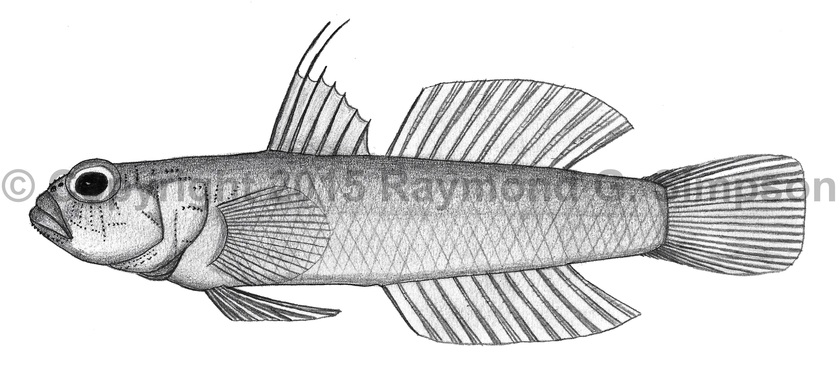
Common Name
Double-filament Goby
Year Described
Hastings & Findley, 2013
Identification
Dorsal Fin: VII, 12
Anal Fin: 11-12
Pectoral Fin: 19-20
Caudal Fin: 17 segmented rays
Vertebrae: 11+16= 27 (total)
Body stout and robust. Eye relatively large. Dorsal fin with anterior two spines elongated (both sexes) and last two spines more spaced than the first five. Pelvic fin rays branched except for the last which is longer and unbranched. Pelvic fins not fused. Two anal-fin pterygiophores anterior to the first haemal spine. Papillae rows 5i and 5s are connected as a single row. Cephalic lateralis pores absent. Body scaled (30-35 rows) posterior to pectoral base. Belly scaled. No basicaudal scales.
Color
Life coloration not evident in preserved fish. Only few scattered melanophores on body and fins.
Size
Maximum size to 32.4mm SL.
Habitat
A relatively deepwater species (62-138m). Habitat undescribed.
Range
Known from three widely separated stations: off the Bahamas, off Tobago, and off NE Colombia. Likely widespread in the Caribbean Sea in deep water.
References
Hastings, P.A., & L.T. Findley. 2013. Chriolepis bilix, a new species of goby (Teleostei: Gobiidae) from deep waters of the western Atlantic. Zootaxa. 3745(5): 596-600.
Tornabene, L., J.L. Van Tassell, R.G. Gilmore, D.R. Robertson, F. Young, & C.C. Baldwin. 2016. Molecular phylogeny, analysis of character evolution, and submersible collections enable a new classification of a diverse group of gobies (Teleostei: Gobiidae: Nes subgroup), including nine new species and four new genera. Zoological Journal of the Linnean Society.
Other Notes
Tornabene et al. (2016) erected Pinnichthys for four species of Caribbean gobies. It is diagnosed by meristic, osteological, and body pore characters noted above.